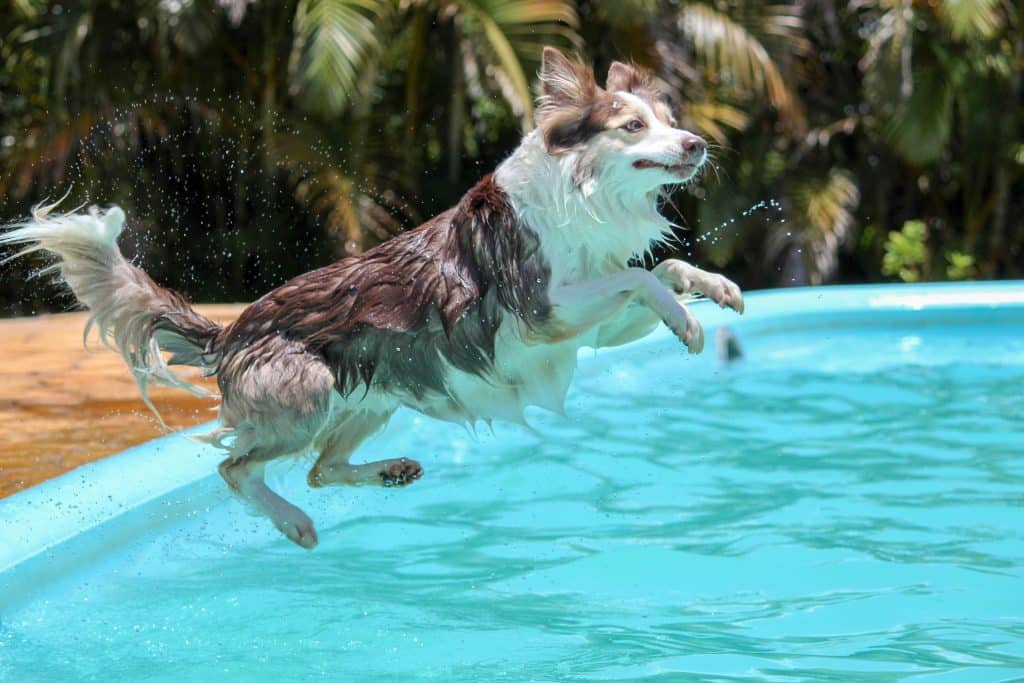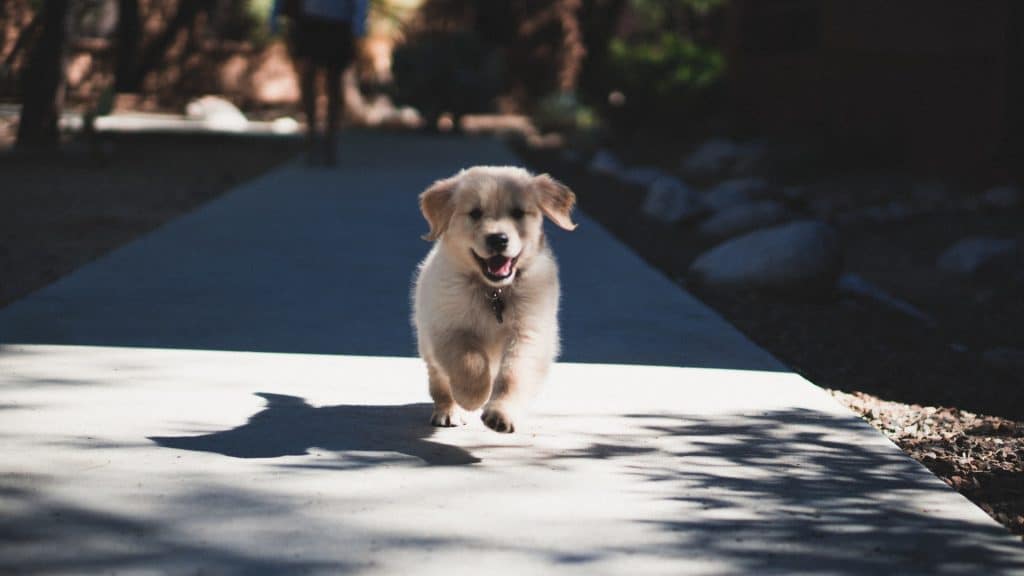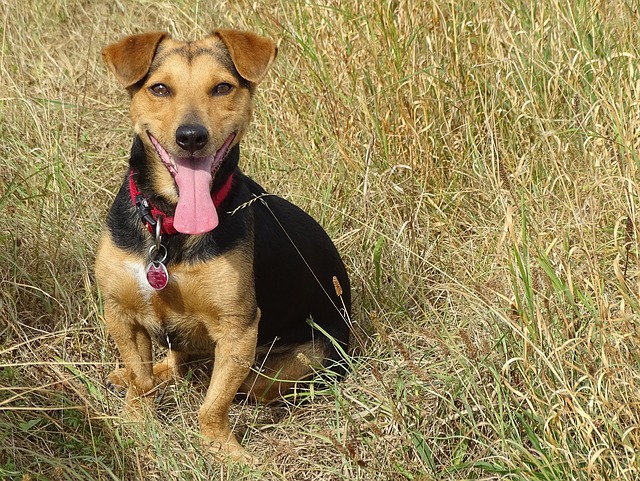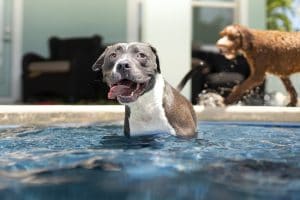Have you ever noticed that even after a rigorous run, even on a lovely summer’s day, your dog is never dripping in sweat, even though you are?
Dogs drink water all day and only see it coming out during the wee. Just how exactly do dogs keep themselves cool?
It is a common misconception that dogs don’t sweat. Many people assume that because dogs don’t have sweat glands as humans do, so they cannot regulate their body temperature similarly. So, do dogs sweat?
Dogs do have sweat glands, and they do sweat, albeit differently from humans. Dogs rely on panting and sweating through their paw pads and noses to cool themselves down. They need to be more efficient at regulating their body temperature and can quickly overheat.
This means they are more susceptible to heatstroke and other heat-related illnesses, particularly during hot weather or strenuous activity. As a responsible dog owner, it is important to be aware of the signs of heatstroke and to take steps to keep your dog cool and comfortable.
How exactly do dogs sweat?
Dogs only sweat in areas not covered in fur; their bellies, paw pads, ears, and anus. It is not a case that the skin just soaks up the sweat. There are simply no sweat glands in those areas at all!
Very rarely will you see a dog sweat so much that you can see it as sweating is not its primary method of cooling itself down.
The natural temperature for a dog is 38 to 39.2 degrees Celsius which is just a little higher than ours (37), so they can tolerate a little more before they get hot.
Dogs can uniquely regulate their body temperature, essential for their health and well-being. One of the most common ways is through panting, paw pads and convection.

- Panting is a form of rapid and shallow breathing that increases the airflow over the moist surfaces of the tongue and mouth, which helps to evaporate moisture and dissipate heat.
- Paw pads contain sweat glands, which allow dogs to release heat through the pads of their feet. When a dog walks on a cool surface, such as tile or concrete, the heat from its body is transferred to the cooler surface. It helps to dissipate the heat and cool the dog down.
- Dogs also cool themselves through convection. When air moves across a dog’s skin, it helps to dissipate heat. Dogs with longer hair tend to be better at using convection as air is trapped against their skin.
Breeds with shorter hair, such as bulldogs, may struggle to regulate their body temperature as effectively and are more prone to overheating. It’s important to note that while dogs have several mechanisms to cool themselves down, they can still be at risk of overheating in certain conditions.
As a pet owner, you should be aware of the signs of your pooch overheating, such as excessive panting, drooling, and lethargy.
Providing access to water and shade, avoiding exercise during the hottest part of the day, and never leaving a dog in a hot car are all important ways to help prevent overheating in dogs.
Read More: Can you wash a dog too much?
1. Do dogs sweat through their noses?
Dogs also have sweat glands in their noses but don’t sweat through them as we do. Instead, the sweat glands in a dog’s nose produce a small amount of moisture that helps to keep their nose moist and trap scent particles.
2. Do dogs sweat through their armpits?
Dogs don’t have armpits in the way that humans do. Dogs have a different skeletal structure that doesn’t include a collarbone, so their front legs are attached to their body differently than ours. This means that dogs don’t have the same armpit area as humans.
3. Do dogs sweat through their ears?
Dogs have sweat glands in their ears but don’t sweat as humans do. The sweat glands in a dog’s ears produce a small amount of moisture that helps to keep their ears moist and supple.
What happens when dogs can’t cool themselves?
When dogs can’t cool themselves down, they risk overheating, leading to heat exhaustion and heat stroke. Symptoms of heat exhaustion include heavy panting, excessive drooling, and weakness. If left untreated, heat exhaustion can progress to heat stroke, a life-threatening emergency.
Symptoms of heat stroke include a body temperature of 40 degrees or higher, vomiting, diarrhoea, and seizures.
As mentioned earlier, dogs primarily rely on panting to regulate their body temperature and cool themselves. However, if the outside temperature or humidity is too high, panting may not be enough to cool them down.

Heat stroke is one of the most dangerous conditions from overheating. In severe cases, dogs may even suffer from seizures or coma. If you notice any of these symptoms, it is important to take immediate action to cool your dog down.
You can take several steps to prevent your dog from overheating and suffering from heat stroke. The first step is to ensure your dog can access plenty of water. You should also avoid exercising your dog during the hottest parts of the day and make sure they have access to shade.
Taking frequent breaks and providing plenty of water is important if you need to take your dog out during the hottest parts of the day. Invest in a cooling vest or mat to help keep your dog cool.
It’s also important to never leave your dog in a hot car, even for a few minutes. The temperature inside a car can rise quickly and become deadly in minutes, even with the windows cracked.
If you suspect your dog may be suffering from heat stroke, it is important to take immediate action. Use cool water to wet their paw pads, ears, and belly to help cool them down.
HOWEVER, avoid using ice-cold water as this can cause their blood vessels to constrict and make it more difficult for them to cool down.
In severe cases of heat stroke, your dog may require medical attention. If you suspect they are suffering from heat stroke, it is important to take them to the vet as soon as possible.
Read More: Water Intoxication in Dogs: What is it and how to reverse it?
Frequently Asked Questions (FAQs)
1. Do all dogs sweat?
All dogs sweat to some extent. However, unlike humans, they don’t sweat through their skin. Instead, they sweat through their paw pads and nose.
2. Can dogs get heatstroke from overheating?
Dogs can get heatstroke if they become too hot and cannot cool themselves down. This is more common in certain breeds, such as brachycephalic breeds (those with short snouts) and dogs with underlying health conditions.
3. How can I tell if my dog is overheating?
Signs of overheating in dogs include excessive panting, drooling, reddened gums, vomiting, diarrhoea, weakness, and collapse. If you suspect your dog is overheating, immediately move them to a cooler location and offer them water. If their condition doesn’t improve, seek veterinary attention immediately.
4. Can I help my dog stay cool in hot weather?
You can do several things to help your dog stay cool in hot weather. This includes providing access to shade, cool water, and indoor air conditioning or fans.
You can also take your dog for walks during cooler times of the day, such as early morning or late evening, and avoid walking on hot pavement or asphalt. Additionally, you can give your dog frozen treats or use cooling mats or vests to help them stay comfortable.




